Fender Precision Bass Restoration / Repair
January 2020
Here is some info on a Fender Precision Bass we worked on in January. My daughter found this by the side of the road with a "Free" sign, and snagged it. It was pretty dirty, with signs of mildew and some corrosion, but otherwise looked to be in OK shape.

Fender Precision Bass as found
A little research based on the serial number on the headstock indicated that this was a Made In Mexico (MIM) Fender Precision Bass from 1996 - 1997.
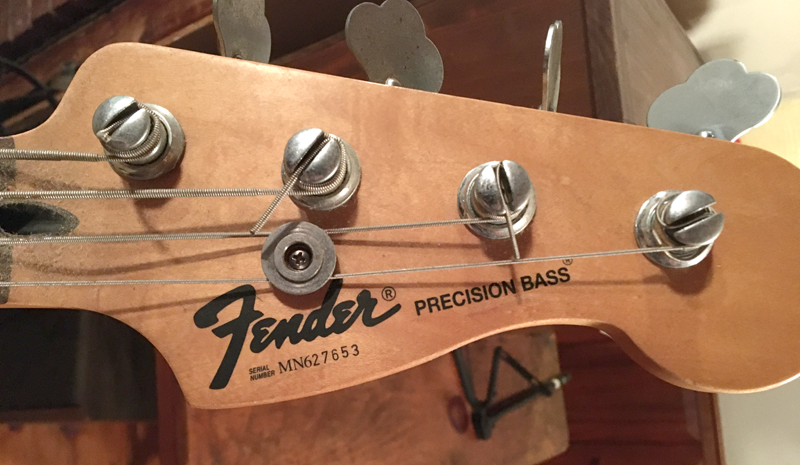
Headstock with Serial Number
Some pictures of it as found.
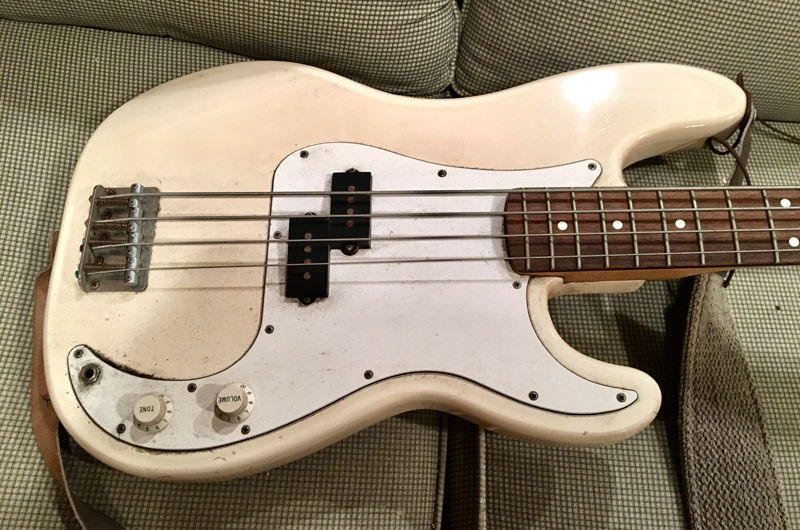
Fender Precision Bass as found

Fender Precision Bass as found
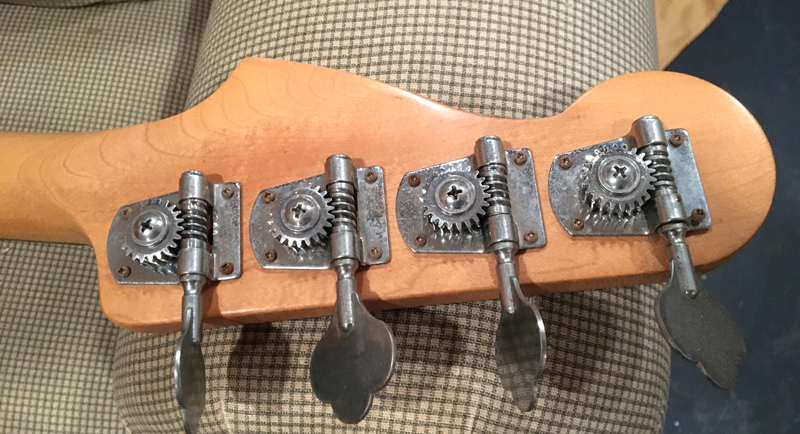
Fender Precision Bass as found

Fender Precision Bass as found

Fender Precision Bass as found

Fender Precision Bass as found
After taking some pictures, we plugged it into an amp. It actually played, although the output jack was in bad shape (only played if the cord plug was held in some positions). A good sign, as it seemed like the pickup was fine. We then took it completely apart so we could inspect the electronics, and give it a good cleaning. This is a MIM version, so the pots, as expected, were not as high a quality as would be found on the USA versions, and they looked a bit messy (maybe worked on in the past - soldering looked a bit sloppy).

Volume and Tone Pots, and Output Jack

Pickups Still Attached to Body

Pickups Removed
Looking at the date stamps on the neck and neck pocket seemed to contradict the serial number, as they appeared to us to possibly be from 1998, though the serial number indicated 1996 - 1997. We sent some pictures to Fender Customer Support to see what they have to say about this. We got a quick reply indicating that this seemed legit, and they thought what looked to us to be '1998' on the date stamps on the neck and neck pocket are actually '1996' - just a bit smudged and obscured by paint and other markings. After looking more closely at the date stamp pictures, we can see that the last digit on both are, indeed, smudged or covered up a bit, and that they probably are actually 1996. The Fender rep also sent along a list of specs for this guitar based on the serial number, including the original color (Artic White), and they all agreed with what we were seeing.
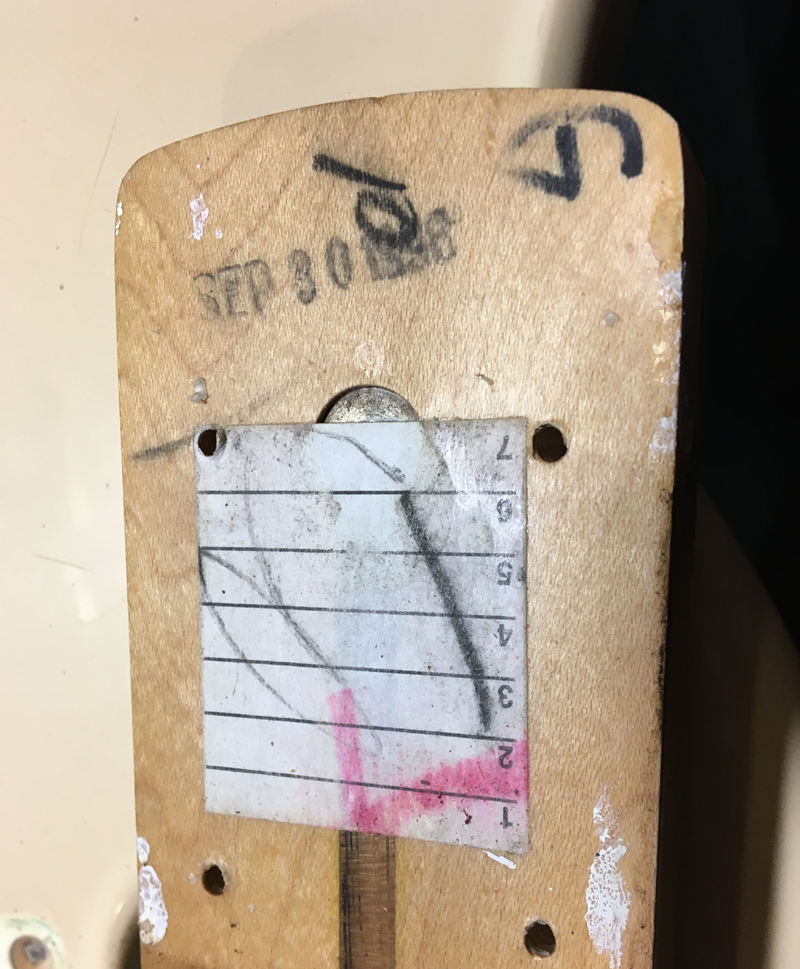
Neck Date Stamps

Neck Pocket Date Stamps
The next step was cleaning up the various parts. We used some Simple Green on the body and pickguard, which did a pretty good job.

Body, Before Cleaning

Body, After Cleaning
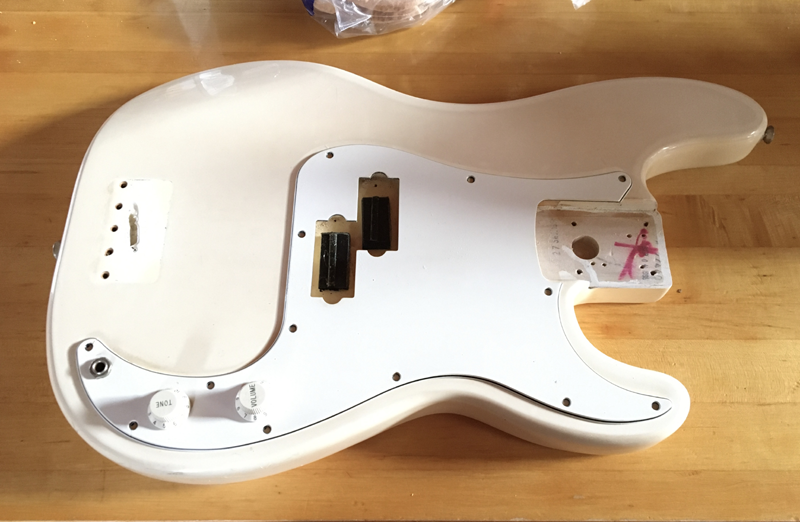
Pickguard, After Cleaning
The metal parts were a bit corroded, but cleaning off the dirt and tarnish made a pretty big difference. We are not attempting to make this look brand new - this bass will have a bit of a 'reliced' look, but it will be clean! If this ends up working well, we always have the option of replacing some of the more corroded parts down the road.

Corroded and Dirty Bridge
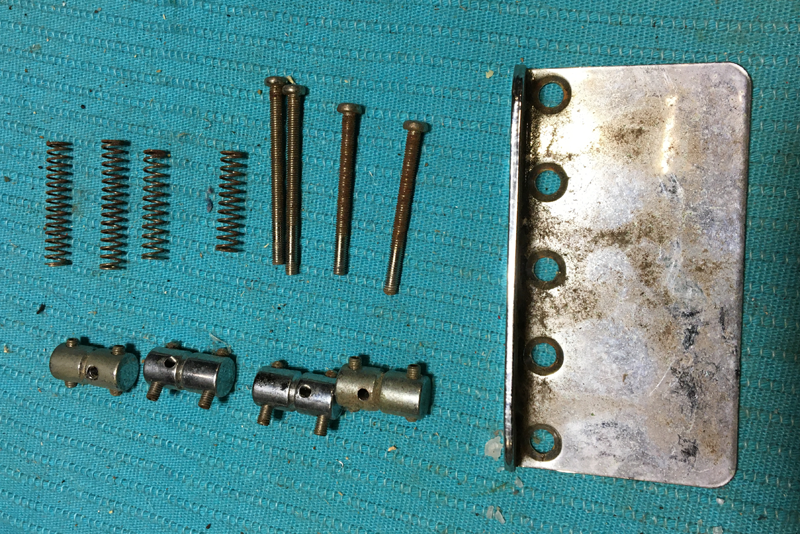
Disassembled Bridge
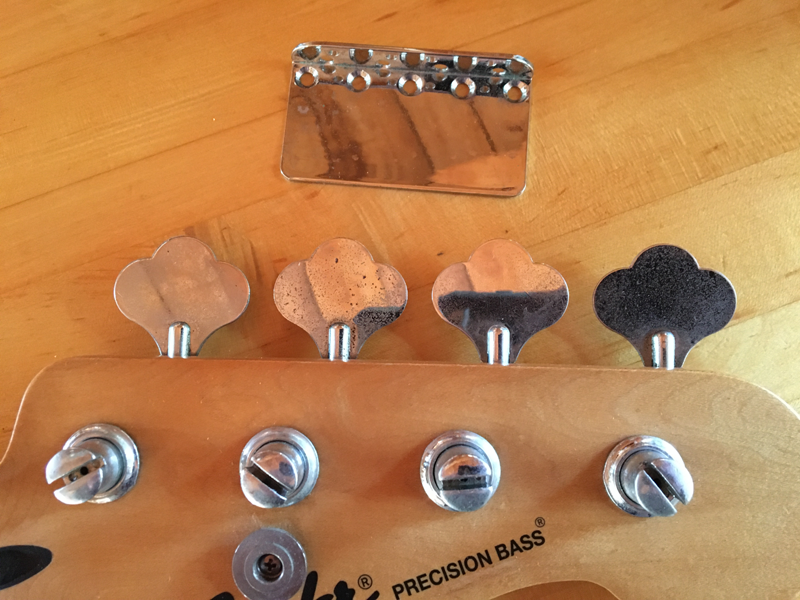
Hardware a bit corroded, but clean
We ordered a kit consisting of CTS replacement pots, an output jack, a tone capacitor, and some Fender style cloth push back wire, and also ordered some proper USA style knobs. We will replace the knobs, because the CTS pots we ordered have solid shafts, so the knurled style 'Strat' knobs (which were used on the MIM basses) will not fit. The USA versions of this bass used Tele style knobs, which we prefer anyway.
When the parts arrived, we installed the new pots, jack, and tone capacitor, and wired them up, using the Fender style cloth wire.

New Pots, Jack, and Tone Cap Wired Up
We then reinstalled the pickups to the body. We dressed up the pickup wires a bit by twisting them together, and soldered them to the volume pot. We ran the bridge ground wire up through the hole to the underside of the bridge, and reinstalled the bridge with new screws. Once that was done, we were able to reinstall the pickguard (again with some new screws) and install the new USA P-Bass style knobs.
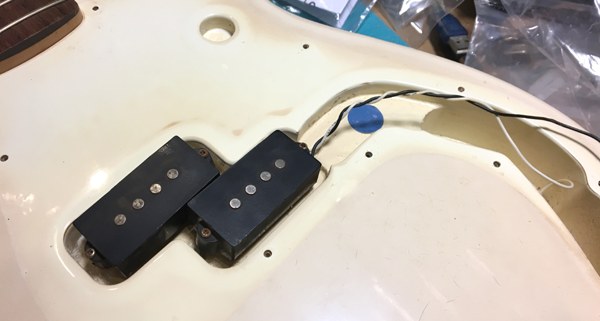
Pickups Reinstalled in Body
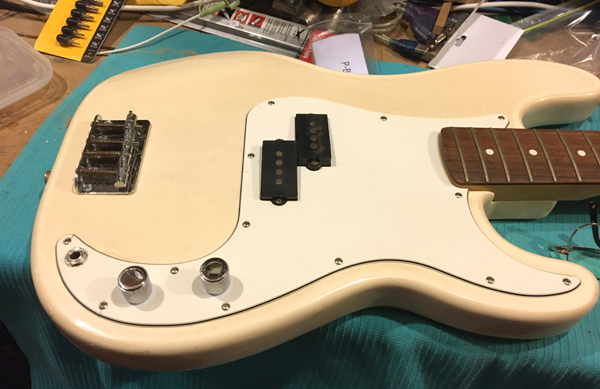
Pickguard Reinstalled, with New Knobs
Our daughter then cleaned up the frets a bit with some fret erasers, installed a new set of strings, and we plugged it into an amp to test and set up the action and intonation. Everything works, and it sounds quite nice!

Reassembled with New Set of Strings
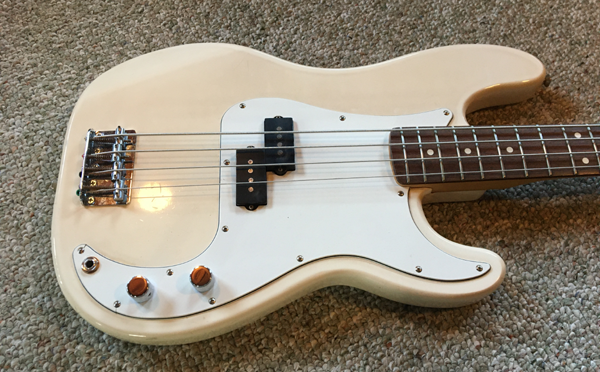
Reassembled with New Set of Strings

Reassembled with New Set of Strings
The neck still has a bit of a bow, and the truss rod doesn't move really easily, so we will probably try to straighten the neck a bit using clamps, and then see if we can take up some slack with the truss rod. It is very playable as is, but it would be nice if the neck was a bit straighter, but we don't want to force the truss rod and possibly strip or break it. All in all, a very usable instrument considering it was found by the side of the road!
